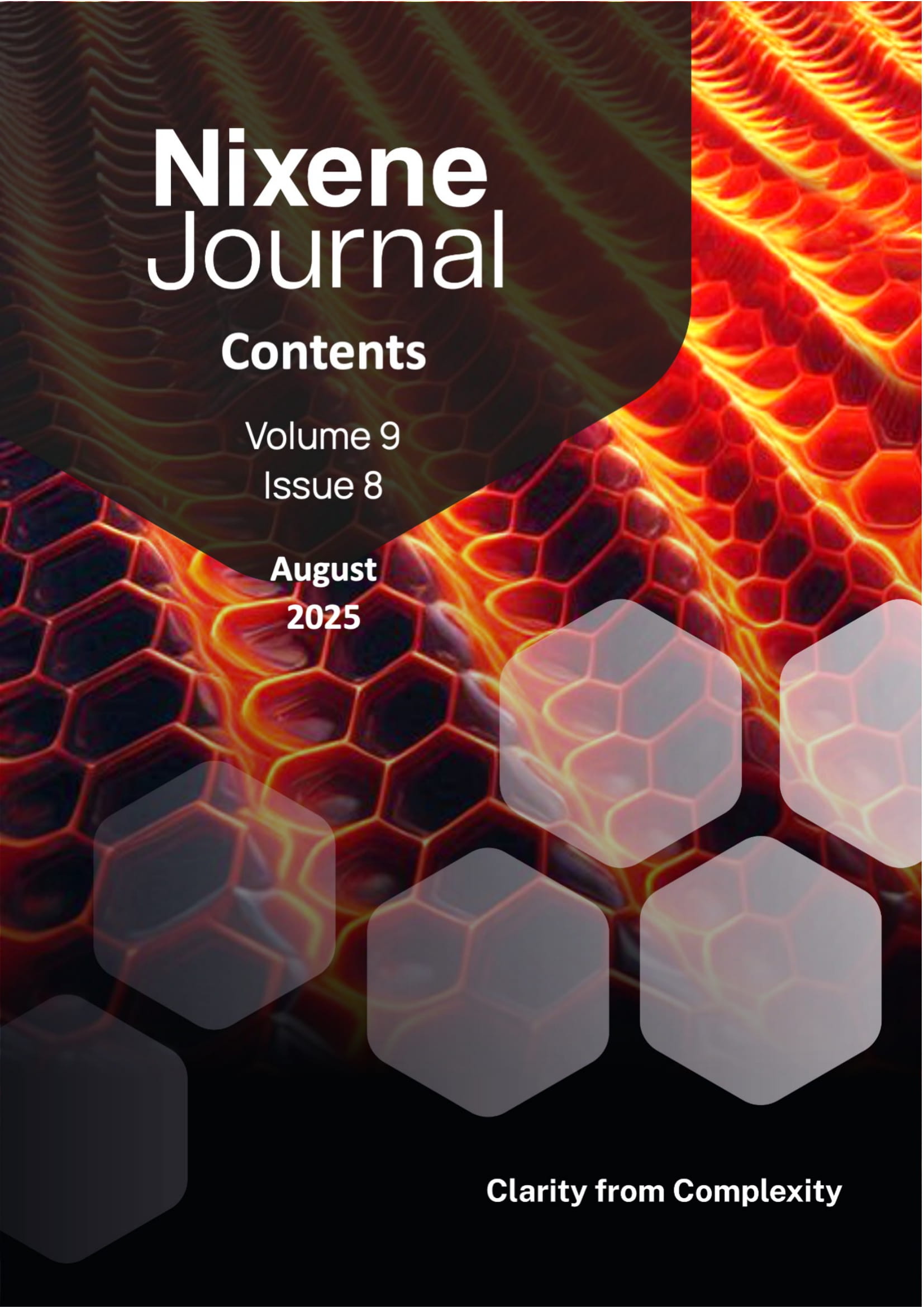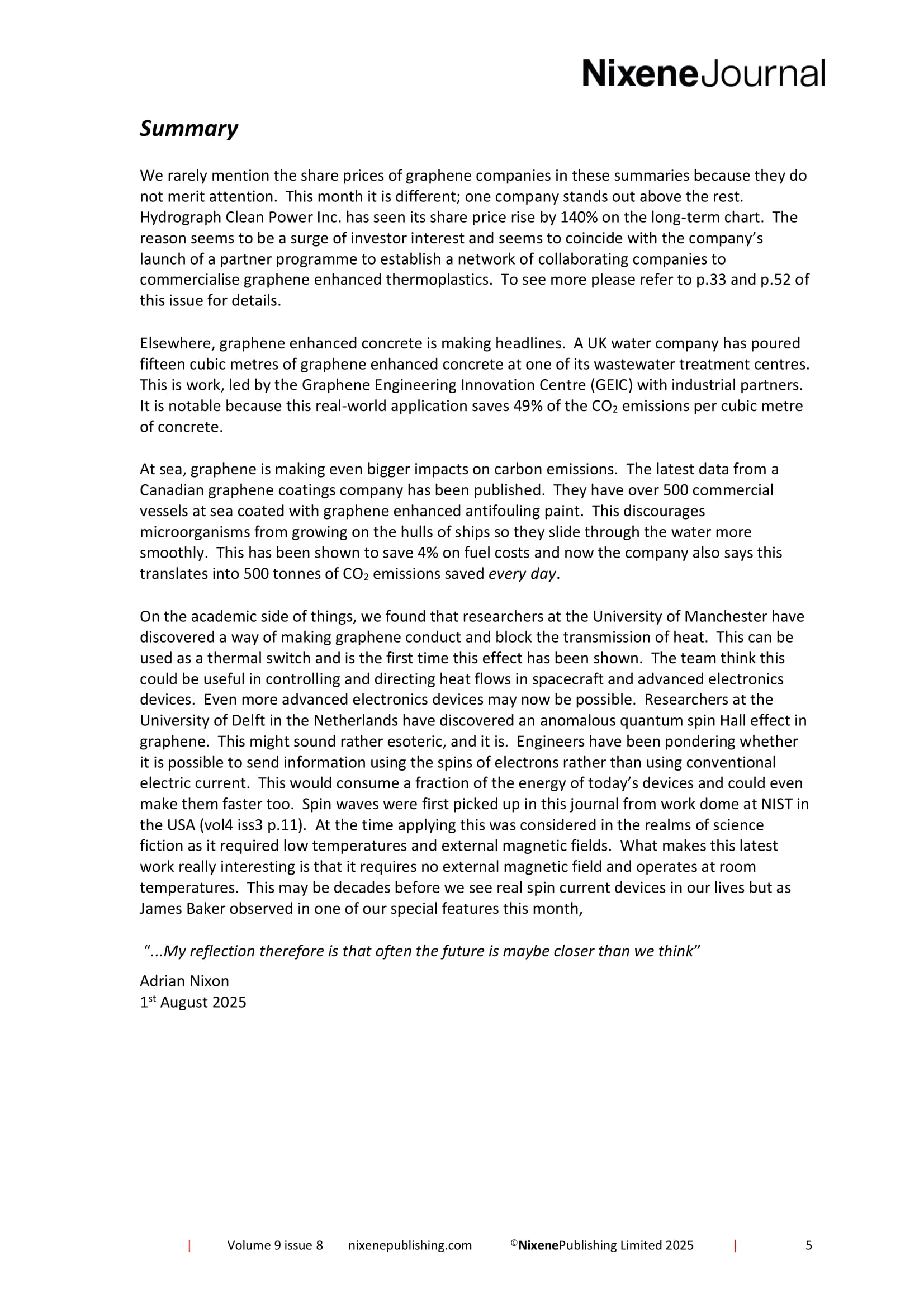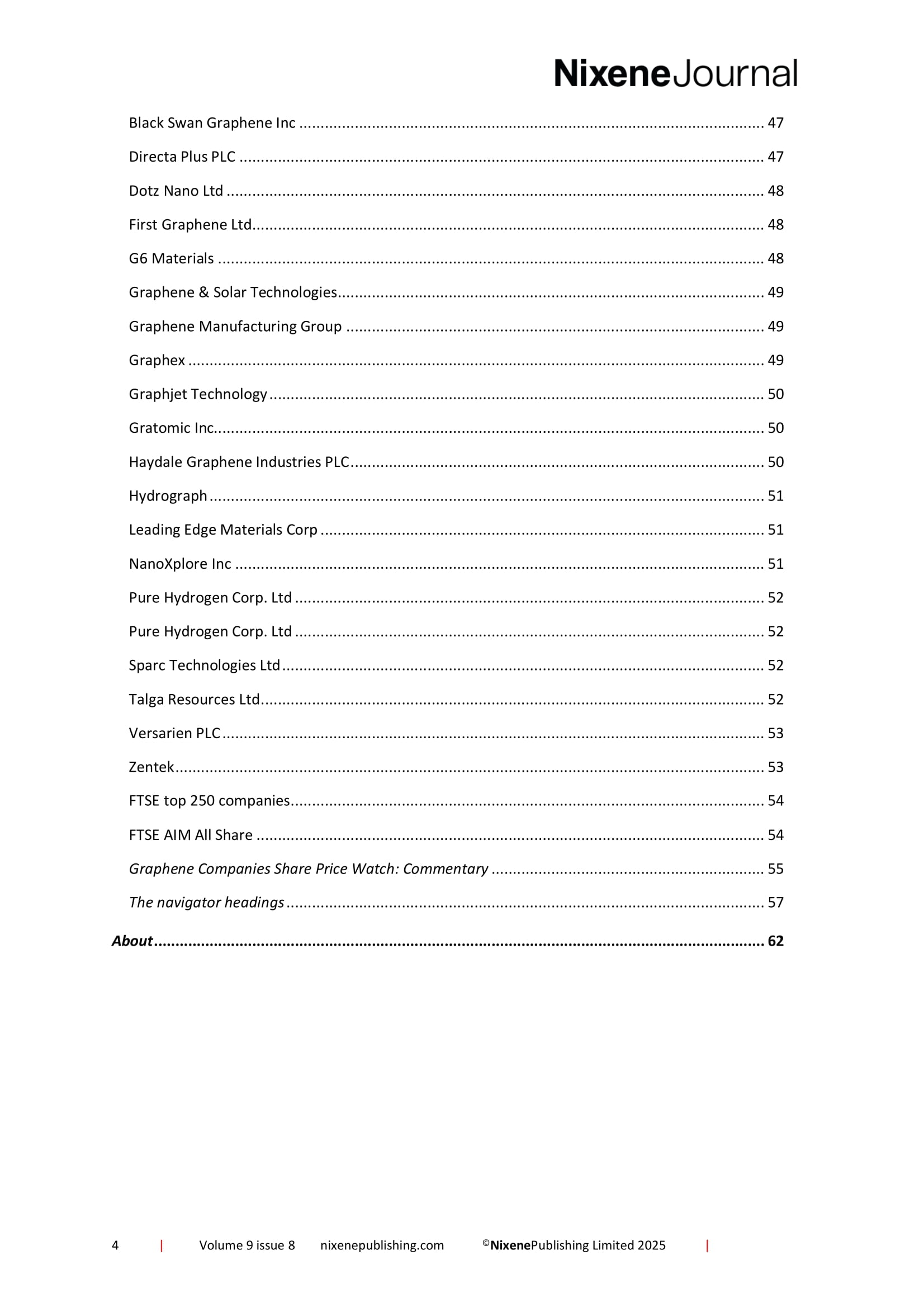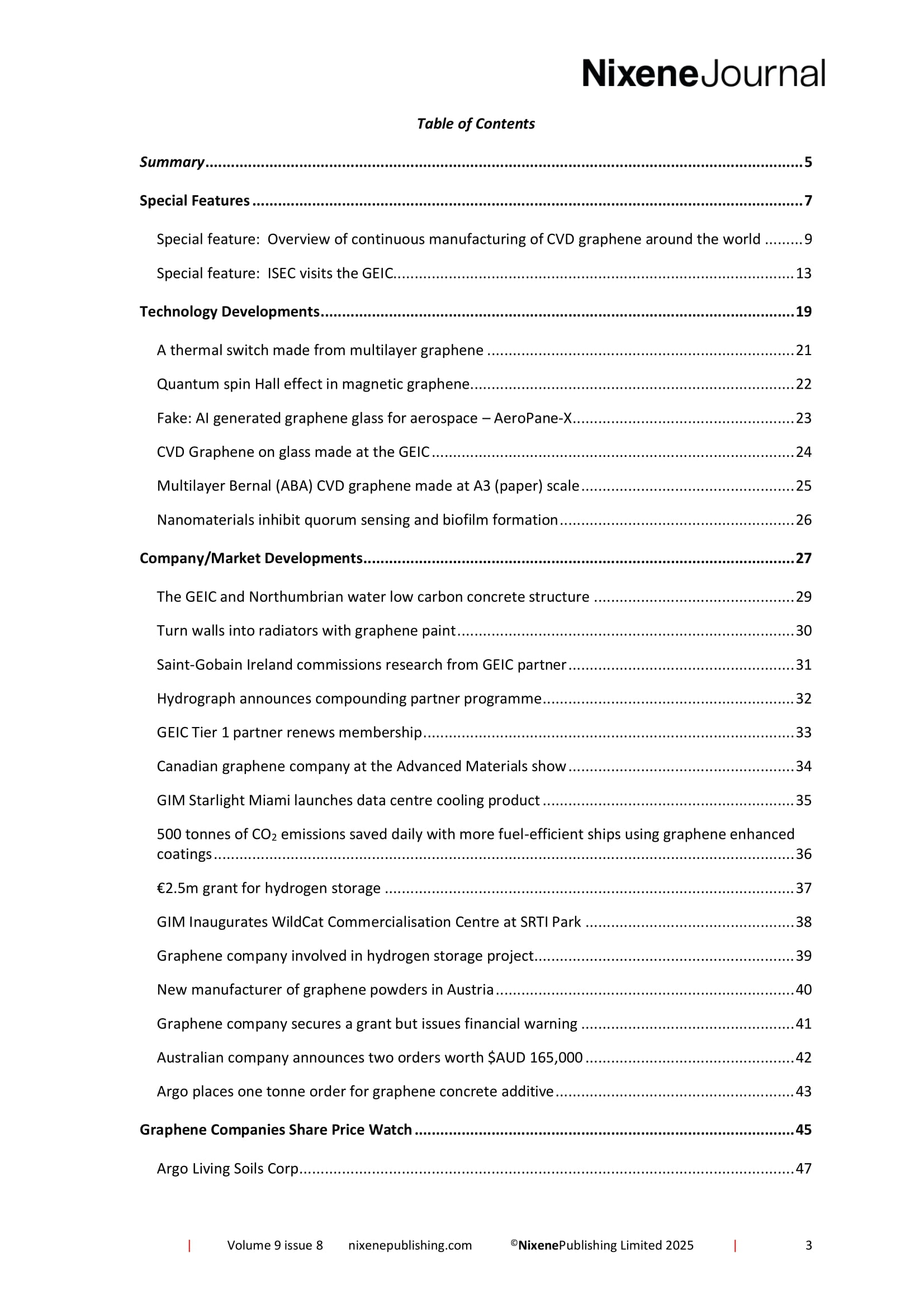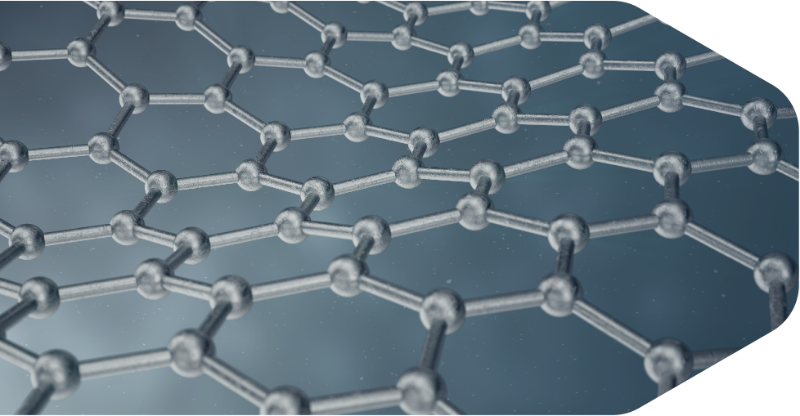Description
We rarely mention the share prices of graphene companies in these summaries because they do not merit attention. This month it is different; one company stands out above the rest. Hydrograph Clean Power Inc. has seen its share price rise by 140% on the long-term chart. The reason seems to be a surge of investor interest and seems to coincide with the company’s launch of a partner programme to establish a network of collaborating companies to commercialise graphene enhanced thermoplastics. To see more please refer to p.33 and p.52 of this issue for details.
Elsewhere, graphene enhanced concrete is making headlines. A UK water company has poured fifteen cubic metres of graphene enhanced concrete at one of its wastewater treatment centres. This is work, led by the Graphene Engineering Innovation Centre (GEIC) with industrial partners. It is notable because this real-world application saves 49% of the CO2 emissions per cubic metre of concrete.
At sea, graphene is making even bigger impacts on carbon emissions. The latest data from a Canadian graphene coatings company has been published. They have over 500 commercial vessels at sea coated with graphene enhanced antifouling paint. This discourages microorganisms from growing on the hulls of ships so they slide through the water more smoothly. This has been shown to save 4% on fuel costs and now the company also says this translates into 500 tonnes of CO2 emissions saved every day.
On the academic side of things, we found that researchers at the University of Manchester have discovered a way of making graphene conduct and block the transmission of heat. This can be used as a thermal switch and is the first time this effect has been shown. The team think this could be useful in controlling and directing heat flows in spacecraft and advanced electronics devices. Even more advanced electronics devices may now be possible. Researchers at the University of Delft in the Netherlands have discovered an anomalous quantum spin Hall effect in graphene. This might sound rather esoteric, and it is. Engineers have been pondering whether it is possible to send information using the spins of electrons rather than using conventional electric current. This would consume a fraction of the energy of today’s devices and could even make them faster too. Spin waves were first picked up in this journal from work dome at NIST in the USA (vol4 iss3 p.11). At the time applying this was considered in the realms of science fiction as it required low temperatures and external magnetic fields. What makes this latest work really interesting is that it requires no external magnetic field and operates at room temperatures. This may be decades before we see real spin current devices in our lives but as James Baker observed in one of our special features this month,
“…My reflection therefore is that often the future is maybe closer than we think”
Adrian Nixon
1st August 2025

